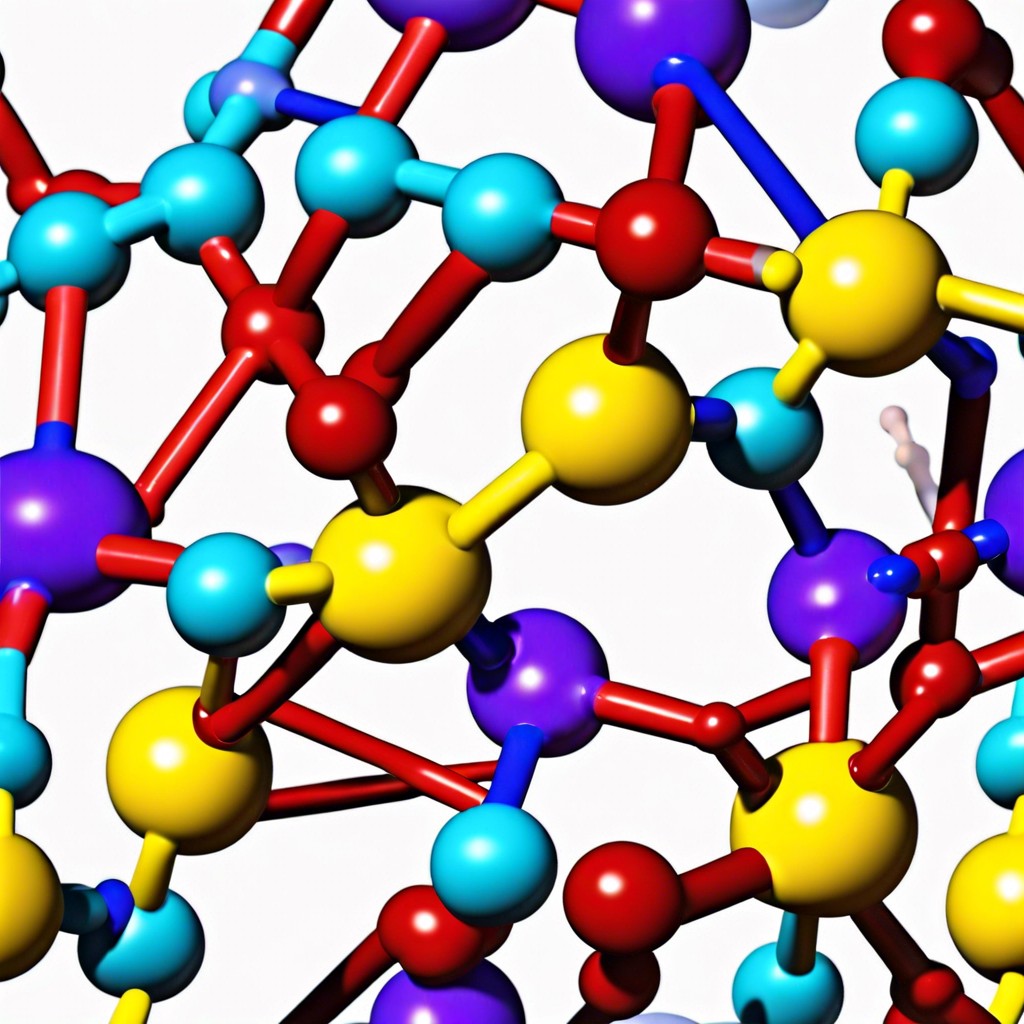In this article, you’ll discover what monomers and polymers of proteins are and how they relate to one another.
Key takeaways:
- Amino acids are the building blocks of proteins.
- Peptide bonds hold amino acids together to form proteins.
- The sequence of amino acids determines the primary structure of a protein.
- Tertiary structure refers to the complex 3D shape of a protein.
- Denaturation and protein folding are important processes for protein functionality.
Amino Acids: The Building Blocks

Think of amino acids as tiny LEGO bricks. These are the basic units that link together to form proteins.
Each amino acid has a snazzy central carbon atom, also known as the alpha carbon. This carbon atom is a bit of a socialite, connecting with four different groups: a hydrogen atom, an amino group (like a friendly handshake), a carboxyl group (that’s the business end), and a unique side chain (the wild card).
There are 20 standard amino acids. The side chain, also known as the R group, can be anything from a single hydrogen atom to more complex structures. This gives each amino acid its personality.
Think of glycine as the shy introvert with just a hydrogen atom for its side chain. Compare that to tryptophan, which shows up with a bulky double-ring structure like it’s ready to party.
When amino acids link up, they form what’s called a peptide bond. This is like holding hands but in a very committed relationship. When many amino acids join in, it becomes a polypeptide chain, which is basically a long line of friendly hand-holders, turning into a protein and performing essential tasks in our bodies.
Peptide Bonds
Peptide bonds are like the glue holding amino acids together. Imagine them as the strong handshakes between amino acids.
These bonds form through a process called dehydration synthesis. It’s not as scary as it sounds. Basically, one amino acid says to the other, “Hey, let’s join forces.” They do this by sharing parts of their molecules, kicking out a water molecule in the process. Hence, dehydration.
- Joining Forces: Two amino acids come together, the carboxyl group of one and the amino group of another.
- Kicking Out Water: During bonding, a water molecule is released. It’s like doing a little clean-up during construction!
- Strength in Unity: The result is a peptide bond, creating a dipeptide. Stack more amino acids this way and you get a polypeptide chain, the backbone of protein structures.
Peptide bonds are strong and stable, giving proteins their robust structure. They’re the kind you’d want to handle the weight if you were building a protein house.
Primary Structure
At the core, primary structure is essentially the sequence of amino acids in a protein chain. Think of it like beads on a necklace, where each bead is an amino acid.
This sequence is crucial because it determines how the protein will eventually fold and function. If you change even one of these amino acids, it can throw the whole protein off. Talk about being dramatic!
Here are some key points:
- It’s determined by the genetic code. Your DNA decides the order of these amino acids.
- It involves peptide bonds, which are super strong chemical links connecting the amino acids.
- Any alteration can lead to a non-functional protein or a totally different function. Imagine swapping sugar for salt in a cookie recipe. Yikes!
In summary, the primary structure is all about the order. Get that wrong, and your protein could turn from a helpful hero into a chaotic villain.
Tertiary Structure
Think of a tangled ball of yarn. That’s the tertiary structure of a protein! In this stage, the protein chain bends and twists in all sorts of directions, creating a complex 3D shape.
- Here’s what happens:
- Hydrophobic interactions: Water-fearing amino acids hide inside.
- Disulfide bridges: Strong bonds form between sulfur atoms in cysteine residues.
- Hydrogen bonding: These weak bonds add extra stability.
- Ionic interactions: Charged amino acids play a game of attraction and repulsion.
Each twist and turn of the protein chain is crucial. One wrong fold, and the protein can’t do its job properly. Just like a twisted-up phone cord, it won’t work well if it’s all knotted up!
Denaturation and Protein Folding
Imagine you’ve built the ultimate LEGO castle. It’s glorious. Now, picture dropping it from the table. Ouch. The pieces scatter everywhere, and your masterpiece loses its form. This, in a nutshell, is like what happens during denaturation.
When proteins face extreme conditions—like high heat or acidity—they can unravel. They lose their shape and, poof, they’re not functional anymore. Sad, but true.
Protein folding is like being the expert LEGO master trying to rebuild. Each protein has a specific shape it needs to function. It’s like a Lego instruction booklet but way more complex. The protein must fold in just the right way to do its job.
Interestingly, some proteins can spontaneously refold, like magic. Others need help (imagine a friend with steady hands). There are special helper proteins known as chaperones. Chaperones guide the folding process, ensuring everything snaps into place correctly.
Environmental factors are key. Just like you need a well-lit room to see those tiny LEGO pieces, proteins need the right conditions to refold correctly. No stress, just the perfect cozy environment.
In sum, think of denaturation and folding like the highs and lows of LEGO building—frustrating yet fascinating.
Recap




